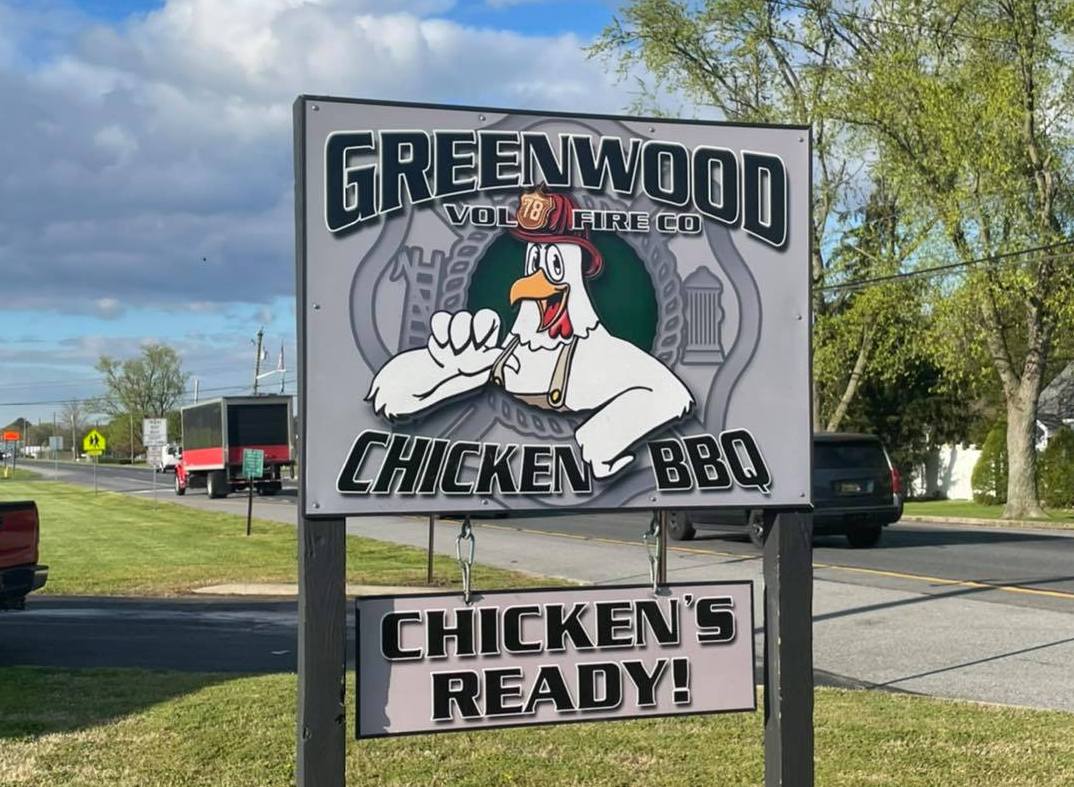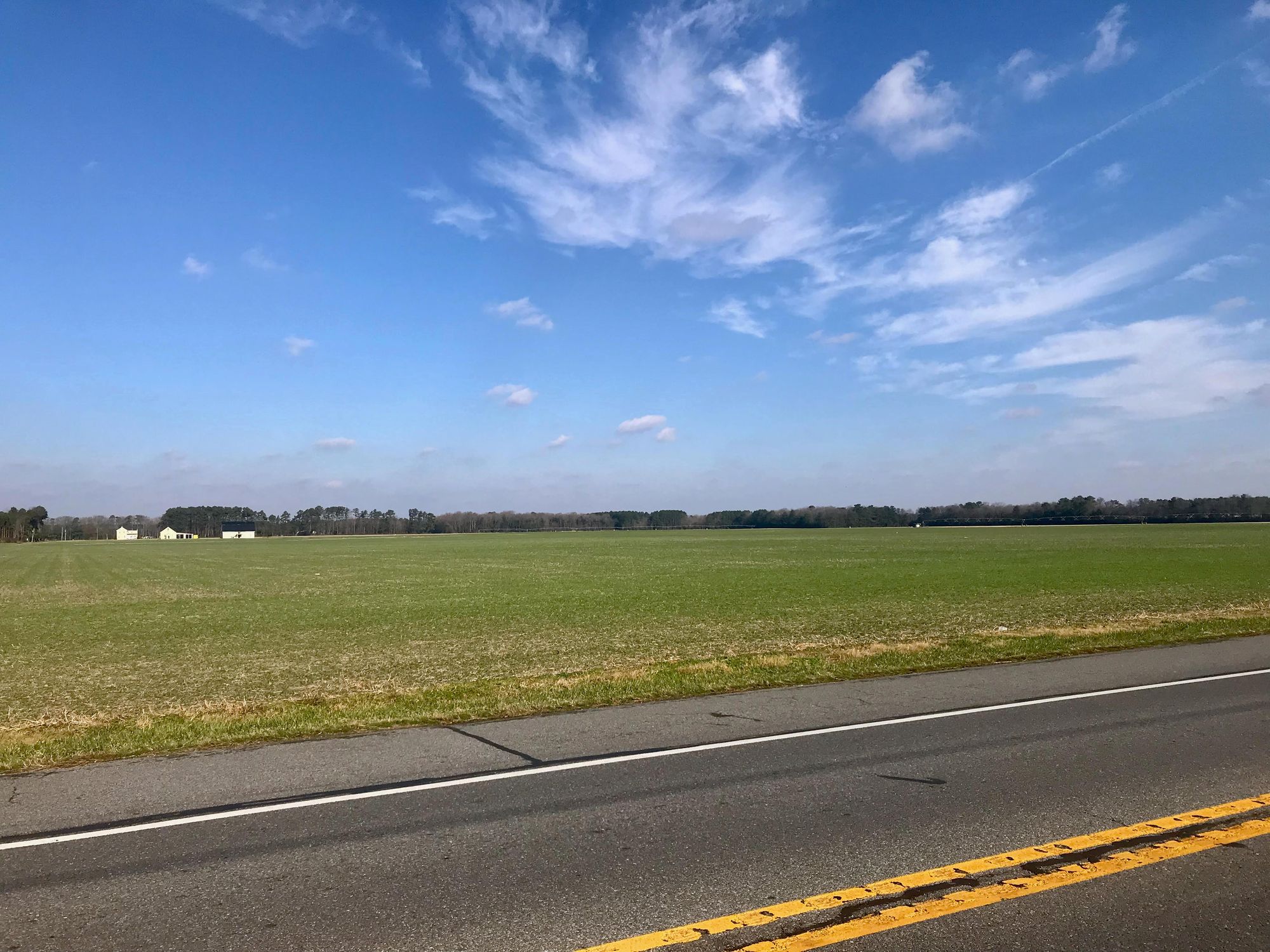This Delaware crew signs up to face wildfire hazards each year
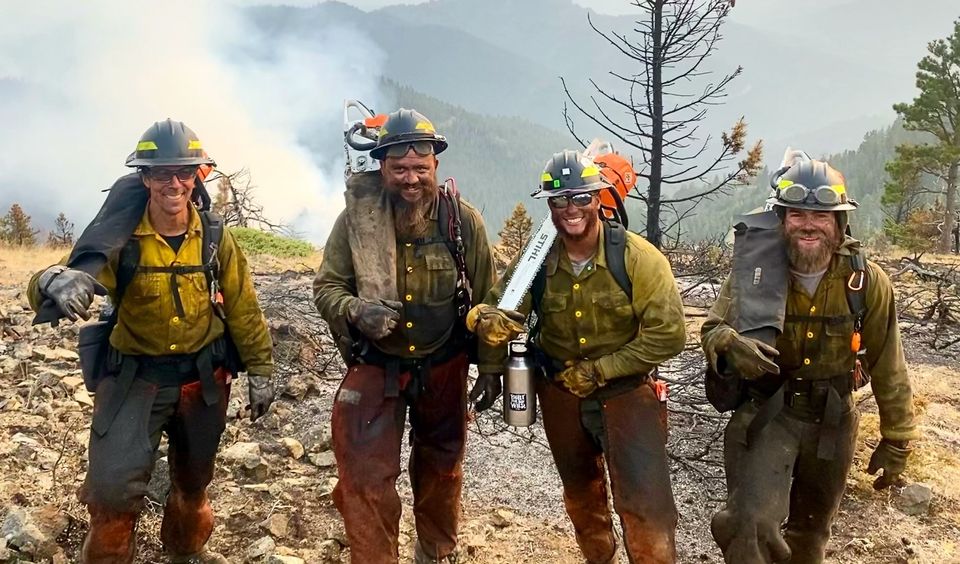
By Cori Burcham
In the rocky landscape of Harris Mountain, a mere 10 miles from the town of Cascade, Montana, a lightning strike in July 2021 ignited a wildfire that would spread in under two months to more than 30,000 acres of forested land.
Due to the increase in wildfires caused by an extreme drought and heat wave out West, the National Interagency Fire Center issued its highest preparedness level in the summer of 2021 to allocate enough national resources to the region. Among those resources was the Delaware Wildland Fire Crew: a 20-person team of certified firefighters who, after traveling across the country by road for four days, were one of the first teams assigned to the Harris Mountain Fire.
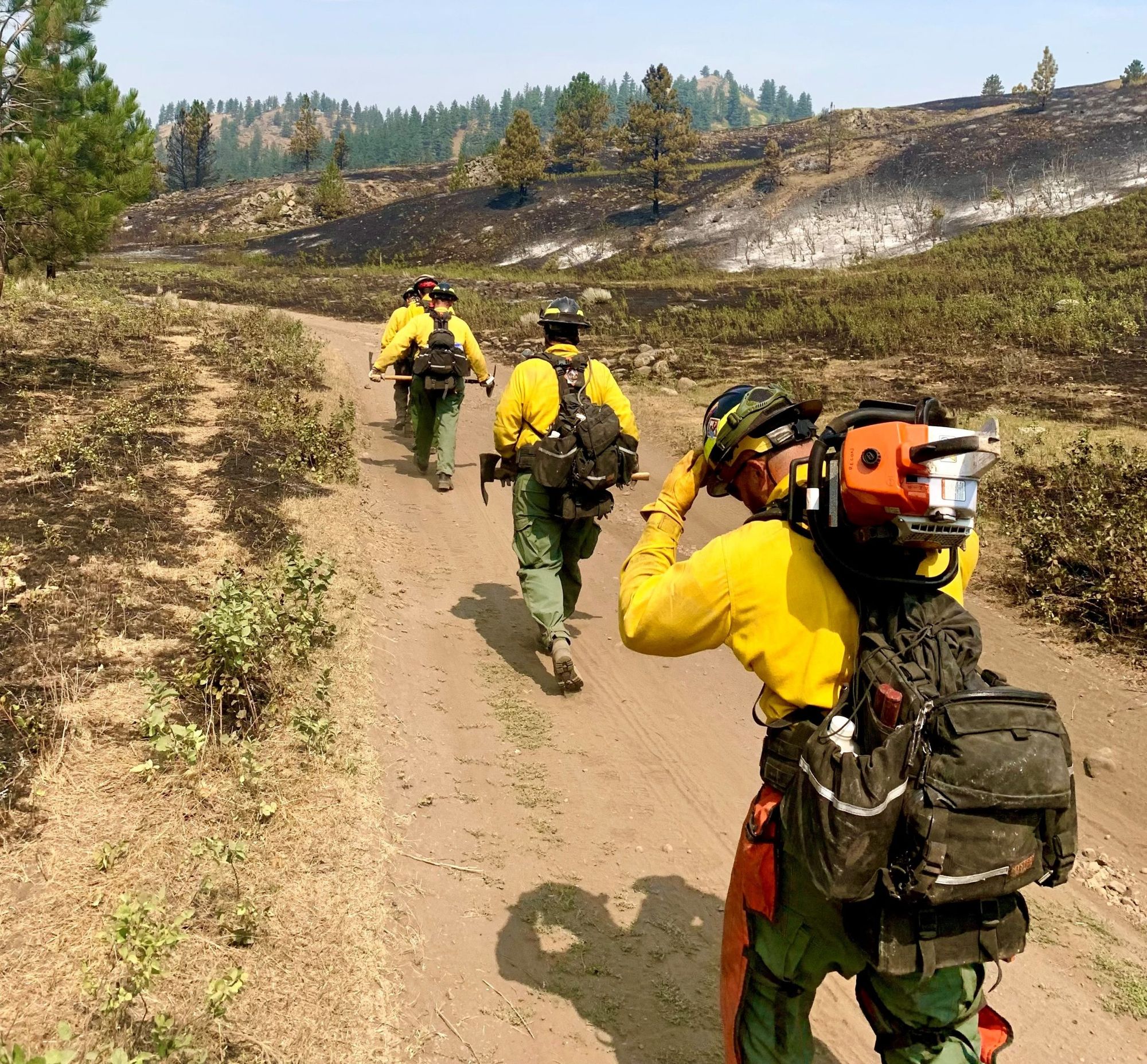
With limited resources and a short time frame to adjust to the elevation and rough terrain, the team worked alongside the West Yellowstone Smokejumpers carrying out fire line construction and burnout operations for grueling 16-hour shifts, every day for 14 days. The Harris Mountain Fire is only the most recent challenging out-of-state assignment the Delaware wildfire crew has assisted with, with an average of at least one assignment per year.
To get a firsthand account of the Delaware wildfire crew, Delaware Independent spoke with Delaware Department of Agriculture’s Assistant Forestry Administrator Kyle Hoyd and Forest Stewardship Coordinator Sam Topper, the leadership behind the Wildland Fire Program.
According to Hoyd, no prior firefighting experience is necessary to join, only an appreciation for the outdoors and the ability to be away from home for two to three weeks at a time.
Crew members are paid and meals, lodging and travel are covered.
Every new recruit’s journey to become a Delaware wildland firefighter begins in the same way, with a 40-plus hour training program hosted by the Delaware Forest Service. The program requires enrollment in five online courses, three introductory classes centered on wildland fire and two Federal Emergency Management Agency prerequisite courses. It also requires new recruits to perform a hands-on practical skills test and work capacity test during an annual fire camp, a daylong seminar that deals with shelter deployment, tool handling, and a live-burn fire simulation.
With only a single day of hands-on fire training, rookies don’t have very long to become acclimated to the high-risk environment before they’re literally thrown into the fire on their first out-of-state assignment, but Topper maintains it’s not possible to adequately prepare for such conditions and there’s no substitute for the actual experience.
“We can only spend so much time preparing. The good news is that this business is very serious about the concept and process of risk management so we’ve thought about that and we do have mitigations in place,” Topper said. “We have a command structure that helps to mitigate that risk and we also have a limit to how many rookies we take on any one crew.”
While Topper has earned various leadership qualifications, such as crew boss and incident commander, over the course of his 17-year-long career with the forest service, he too was once a rookie. Apart from taking a few wildfire courses when earning his degree in forestry, Topper didn’t have prior firefighting experience when he was first employed by the Delaware Forest Service in January 2005. Looking back on his first wildfire trip, he remembered feeling rather overwhelmed and likened his experience to a fish out of water.
“For me personally, I probably would not have succeeded my very first out-of-state western assignment had it not been for that cursory training that I received and the experience that I had in-state before going out there. It’s extremely difficult,” Topper said.
Thanks for your interest in the Independent's journalism. If you haven't already, please consider supporting our work with a paid subscription
A wildfire crew member’s day-to-day experience can vary depending on their role, but the typical day for a rookie on an out-of-state assignment is pretty standard.
After waking up early, the firefighters put on their protective gear, which consists of a flame-resistant long-sleeved shirt and pants, leather boots, a neck and face shroud, gloves, eye and ear protection, a helmet and their packs, complete with a tent-like fire shelter in case they’re trapped by the wildfire. After discussing tactics and contingencies at briefing, the firefighters then begin long hours of physical labor throughout the day until the sun sets.

During their initial fire training, new recruits are taught that fire needs three things to exist: oxygen, heat, and fuel. The strategy developed by command is often determined by the topography of the region. According to Topper, if there’s a water source nearby, the firefighters can use it to cool down the fire until the temperature is below the ignition point.
“The drawback to that one is that it’s only temporary. On hot days and during drought conditions, that water evaporates, sometimes rather quickly before the heat of the fire is gone, and it can rekindle,” Topper said.
An alternate strategy involves building a fire line, removing all the vegetation in front of the fire to deprive it of its fuel source. After the crew spends hours cutting down trees, digging out roots, and dragging away brush until there’s nothing left but bare earth, the fire doesn’t have anything left to burn and therefore goes out. After a full day of fire line construction, the wildfire crew then returns to camp to rest and prepare themselves to start the process all over again the following day.
When he employs the title of crew boss, it is Topper’s job to supervise the crew, acting as the middleman between the commanders and his team. Back at the command post, leaders assess the situation and develop a strategy to battle the fire. The crew boss guides the crew in that strategy and ensures that the work is being completed effectively and safely. The crew boss can document first hand whether or not the strategy is working and report that valuable information back to command.
A symbiosis needs to exist between Topper and his crew. While the ground crew battles the wildfire directly, Topper acts as the crew’s advocate in large and small ways. Apart from the critical task of ensuring that the crew is never placed in any immediate danger, it’s also Topper’s job to make sure his crew is supplied with everything they need, be it fuel for chainsaws or lodgings for the night.
Apart from the evident danger that comes with battling wildfires, many of the challenging aspects of the job actually occur long after the fire stops burning. No matter if they're a rookie or a veteran, all wildland firefighters are exposed to the same health hazards on wildfire trips.
“Virtually no one can go a season without having some type of an injury or an accumulation of small injuries,” Topper said. Hard physical labor all day, every day for a prolonged period of time on assignments can certainly put a toll on a firefighter’s body, affecting quality of life in the short and long term. Then, of course, one of the more blatant threats to a crew member’s long-term health is smoke inhalation.
Topper said the job also comes with a lot of personal sacrifice that can affect a firefighter’s mental health. Crew members are separated from their families for long periods of time. Wildfire containment doesn’t always work out as planned and the team might have to watch a home burn down after they’ve failed their mission.
It’s hard to imagine that anyone would willingly put that kind of stress on their mind and body. The notion of traveling cross-country to protect the residents, wildlife, and landscape of America’s forests from wildfires sounds like an adventure, but hearing about a crew member’s daily routine grounds the experience in reality.
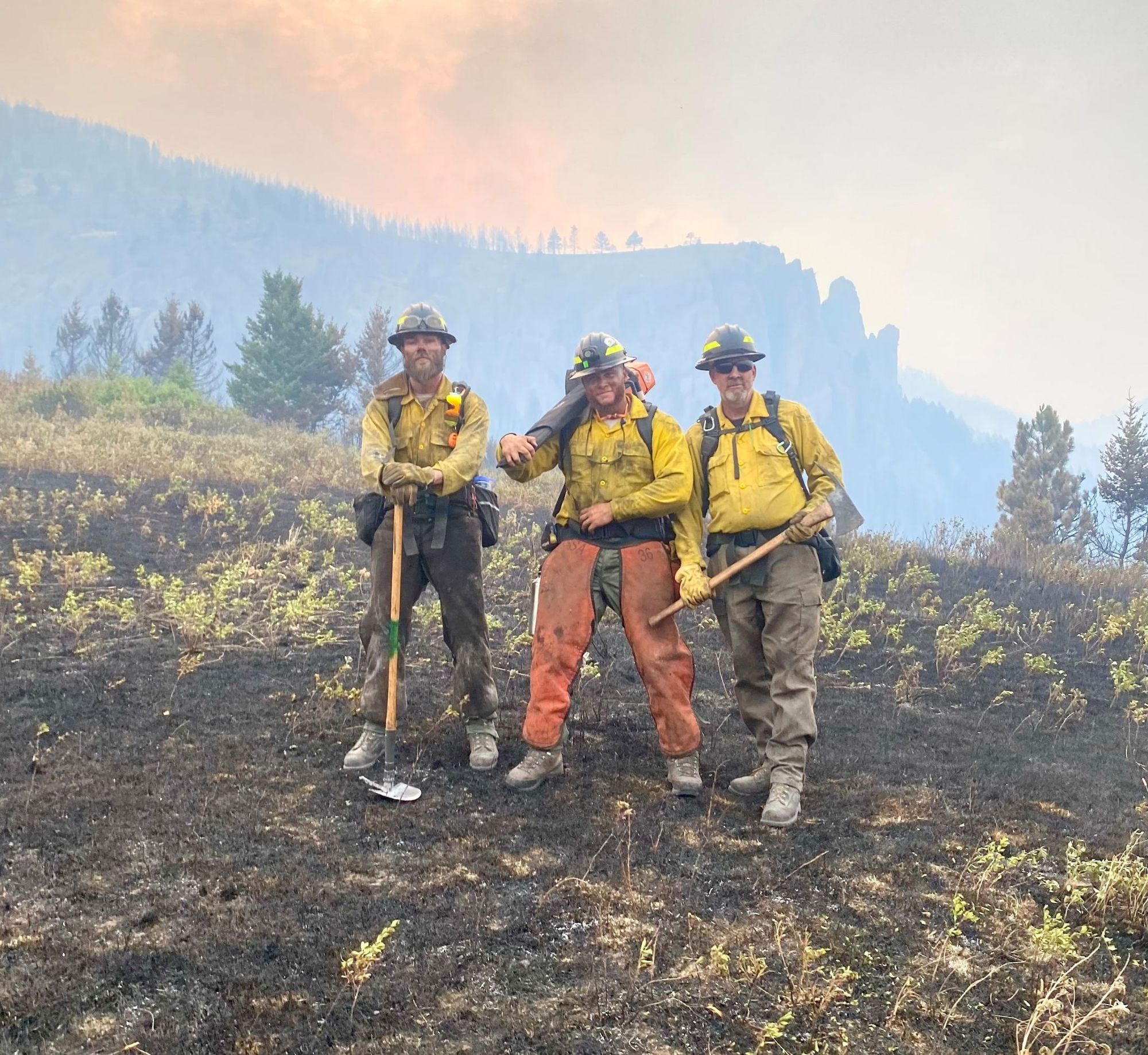
Topper admits there are plenty of reasons to forgo a career in wildland firefighting. Firefighters are often underpaid for their efforts. The days on assignment are long, exhausting, and full of difficult physical and emotional tests.
The reasons to do the job, though, are compelling enough to motivate Topper and other firefighters to accept each new difficult assignment.
“Service is the obvious one, right? It’s a way for some people like myself to give back. That’s how I serve,” Topper said.
He cited the camaraderie shared among his crewmates and the memories born from both the good and bad experiences as incentives, along with the appreciation from the people whose lives are personally impacted by the wildfires. The people’s gratitude that those with no personal stake in the matter would put themselves at risk to help can be witnessed during television interviews, on handmade posters and through donations, and Topper considers it the most rewarding part.
“We go across country, leave our families, leave our jobs to go help people that we’ll never meet,” Topper said. “They’re evacuated. We’re gone before they come back. We don’t know those people and we’ll never meet those people, but we’re happy to help them.”
The Delaware Wildland Fire Crew is actively recruiting and extending an open call to the public to enroll in its spring training program. According to Hoyd, the program always has a need for new recruits. While the crew currently has a list of over 244 wildland firefighters, fewer than 50 crew members are able to attend out-of-state assignments annually.
Their numbers are often reduced due to the demands of individual schedules, which makes employing two 20-person crews throughout the year rather problematic. As a former rookie, Topper maintains that the only prerequisite new recruits need is the willingness to try.
“It doesn’t require previous experience or education,” he said. “All it requires is that you’re physically capable and that you’re interested in serving.”
For more information on the Delaware Wildland Fire Crew’s training courses, visit the web page or contact Kyle Hoyd at kyle.Hoyd@delaware.gov.
More stories:
